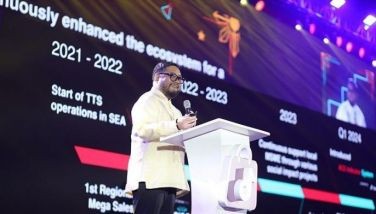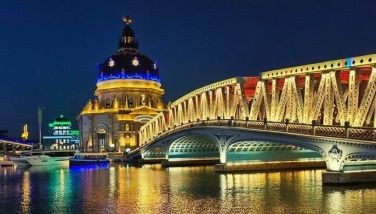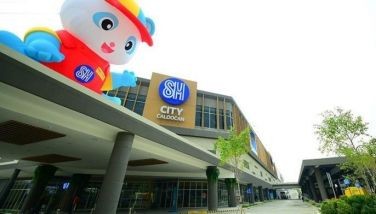Guest exorcism
MANILA, Philippines - The 45-minute drive from downtown Seoul to the Unification Observatory one summer morning was pleasant enough despite the light drizzle. The further we drove north along the expansive highways, the closer I felt we got to the mountains, successive ranges of which crisscross the entire peninsula.
We stopped on the summit of the Odu Mountain some 118 meters above sea level. Opened to the public in 1992, the Odusan Unification Observatory, I later found out, is as close as most South Korean civilians can get to the De-militarized Zone (DMZ), and sits right within an ancient fortress built on a strategic junction where a river — Imjingang — that runs through a total of seven cities and counties in both the North and South Korea meets up with another river — Hangang — before flowing into the West Sea.
Haetahk, my Korean friend, and I went straight to the observation deck on the third floor of the five-level facility. After watching a short video — luckily, in English — explaining how daily life in that part of North Korea had been observed from the Observatory to form part of what is known about life in the North, and how difficult life in North Korea is and the South Koreans’ wish for unification of the two Koreas, my friend and I walked out into a corridor leading to the other floors to get a better view of the infamous North.
Through raindrops and fog descending upon us, I saw virtually nothing but a piece of land and shadows of what appear to be huge mountain ranges on the opposite bank only 2.1 meters from our side of the river.
The videos and exhibition halls at the Observatory merely reiterate what little many of us already think we know about North Korea, mostly from what Western media had managed to sneak out from under the Kims’ noses — that people there live in a communist regime and in conditions that haven’t changed much since before the war (the contemporary North Korean classroom and home models as shown at the exhibition hall are reminiscent of counterparts in 1960s South Korea, my friend noted), that most live in poverty, with the barest of human freedoms (e.g. freedom of movement) and in cult-like reverential awe of and devotion to, first, the “Great Leader†(Kim Il-Sung), and then, the “Dear Leader†(Kim Jong-Il).
I remember seeing on television a coverage of one Asian games meet showing images of North Koreans being upset and weeping and rushing to hold up a banner — where the image of Kim Jong-Il had been printed — whose edges were threatening to touch the ground (or was it because the banner was not placed high enough as befitting the status of their revered “Dear Leader,†I can no longer recall).
During the tour I asked my friend if it was possible that North Korea’s 24 million people truly believe that theirs is a good life, their values superior to the rest of the “US Imperialist-led†world’s?
How did it come to this?
Hwang Sok-yong’s novel, The Guest, gave part of the answer to my question. A story of a man in his 50s who returns to his hometown, Ch’ansaemgol, in the district of Sinch’Ån in Hwanghae province in North Korea after nearly five decades of living in the United States, the novel tells of Ryu YosÅp as The Guest to the country of his birth.
Accounts of the 10 million Korean families separated by the war are in themselves common. What Hwang did was to provide clarity and multiplicity of voices that tell the one singular story of how one tried to stay alive and tried to live according to one’s principles and conscience during the three tumultuous years when the former — staying alive — was a difficulty, and the latter — living according to one’s principles and conscience — a luxury.
From these many different voices — ghosts of Ryu YosÅp’s old friends, relatives, former neighbors and fellow villagers — one hears Illang, a destitute, friendly village handyman whose meanness and arrogance when “promoted†to the rank of village Party Commander spared no one; Sunnam, a landless tenant forced to choose sides between the warring camps, and therefore signed up for the Party thinking that’s the only way to not get himself and his family killed; a landlord that always treated his tenants with goodness, and who later found himself pleading to his former tenants for his life; and finally, one listens to Ryu Yohan, YosÅp’s newly departed brother, as he — after avoiding discussing the subject altogether with his younger brother for four decades — slowly reveals how Yohan, a devoted Christian and son of a presbyter, became one of the leaders of the young Christians group that went on to commit brutal acts against the “devil†— the communists.
In a note at the beginning of the novel, Hwang explains the reason for his choice of title. Christianity and communism — two influences brought into the Korean Peninsula from the West — are treated in the novel as “guests,†much like smallpox, another Western import, had been called “sonnim†(translated as guest). Hwang mentions that when smallpox was sweeping through the peninsula, shamanic rituals were performed to drive out the unwanted guest.
By reliving the memories of war particularly in Sinch’Ån in Hwanghae province, Hwang hopes to help ‘exorcise’ a nation of the trauma of painful memories of what he called a “50-day nightmare during which Christians and Communists – two groups of Korean people whose lives were shaped by two different “guests†– committed a series of unspeakable atrocities against each other.†As one of the voices in the novel so succinctly captured, “Before we knew it the whole thing had become a kind of holy war, and everyone was ready to become a martyr – the Christians for their sacred temples and the Communists for the People and their class struggle.â€
So, how did North Korea come to be a showpiece of a failed communist experiment? Somehow, pointing to it as a Cold War politics casualty sounds grossly insufficient, not to mention, simplistic. Blaming the ‘American Imperialist’ – as the regime is wont to do for every bad thing that befalls the nation – including the building of a Massacre Remembrance Museum in Sinch’Ån to indict American soldiers for the murders of civilians, reeks of nothing more than propaganda by the communist regime.
Because as is most often the case with national tragedies that strike us and stay with us — and the tragedy that is North Korea is no exception — “it turns out,†Hwang points out through his work, “the atrocities we suffered were committed by none other than ourselves.â€
THIS WEEK’S WINNER
For travel souvenirs, Madelline Romero collects books written by local authors in every country she visits. She attended the University of the Philippines to earn a Broadcast Communication degree and now works for an NGO.















